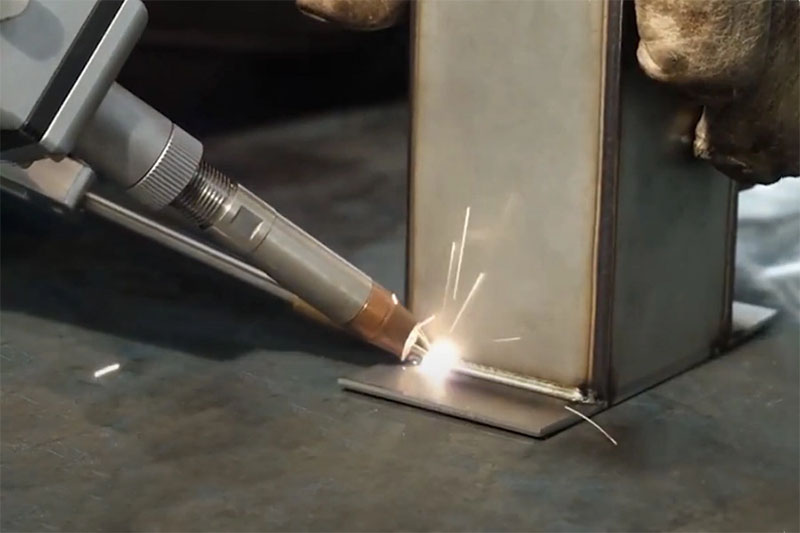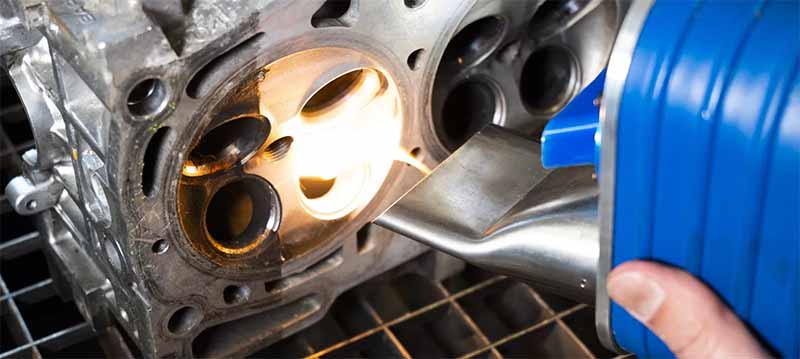Galvanized steel weld with lasers has become a preferred method for industries seeking high-quality, efficient, and precise joining techniques. Unlike traditional welding methods, laser welding provides a faster and cleaner process with minimal heat distortion, making it ideal for galvanized steel sheets. However, welding this material does come with certain challenges, such as managing zinc evaporation and weld quality. In this article, we will explore the advantages and limitations of laser welding galvanized steel and introduce our laser welding machines specifically designed for galvanized steel welding.
Is it Possible Galvanized Steel Weld with Lasers?
Welding galvanized steel involves fusing a galvanized steel piece with another galvanized steel sheet or different metal material. Galvanized steel has a zinc coating on its surface to enhance its corrosion resistance, strength, and durability. When laser welding galvanized steel, it is essential to consider the properties of the zinc coating and the impact of the laser beam on it. For example, the evaporation of zinc can lead to the formation of fumes, increase the likelihood of porosity, and result in the inclusion of oxides in the welded area.
Can You Laser Weld Galvanized Steel?
Yes, you can. Laser welding is a high-energy beam welding technique characterized by high energy density, high welding efficiency, a high depth-to-width ratio, a small heat-affected zone, minimal thermal distortion, and energy savings. These features make it ideal for precision welding applications. Laser welding is widely used in the metal processing industry and is particularly suitable for materials such as stainless steel, cast iron, aluminum, copper, and galvanized steel.
When welding galvanized steel, it is necessary to reach a very high temperature. However, excessively high temperatures can cause undesirable reactions. Therefore, it is crucial to select the appropriate welding parameters based on the thickness of the steel to ensure quality and efficiency in welding.
How Thick Can a Handheld Laser Welder Weld Galvanized Sheets?
Handheld laser welders are widely used for welding various metal materials, including galvanized sheets. For welding thin galvanized steel sheets, a handheld laser welder is indeed an effective solution.
For galvanized sheets with a thickness of 1~2 mm, a handheld laser welder is suitable. Specifically, for a 1 mm thick galvanized sheet, a power setting of around 600W is typically sufficient to complete the welding task. To weld sheets of this thickness, it is recommended to use a 1,500W laser welder. The DPLASER 3000W laser welding machine offers powerful welding capabilities, enabling a single-pass full penetration weld on galvanized steel sheets up to 6 mm thick.
Handheld laser welders can weld galvanized sheets ranging from 1~2 mm and even thicker sheets, such as 5~6 mm. However, the equipment power must be adjusted according to the actual thickness of the sheet, or an appropriately powered device should be selected.
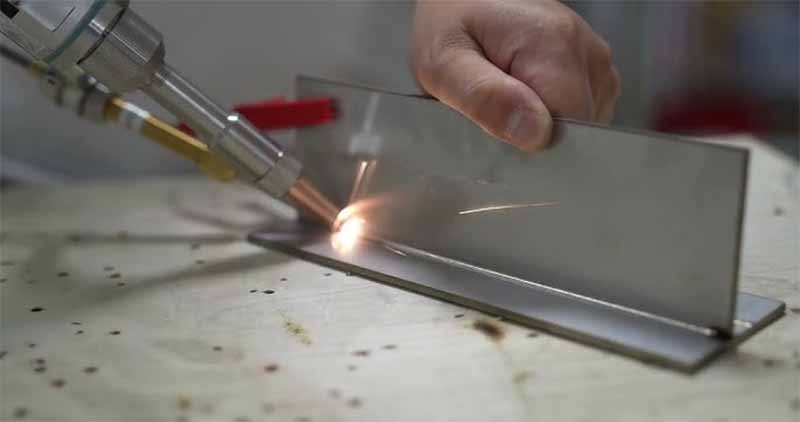
Benefits of Laser Welding Galvanized Steel
Laser welding technology is widely used for welding various metal materials due to its advantages, such as a small heat-affected zone (HAZ), low heat input, and minimal welding deformation. It is especially suitable for welding galvanized steel sheets with thick coatings.
A significant benefit of laser welding is that it allows for non-destructive welding with almost no HAZ, which greatly reduces the risk of coating burn-off and oxidation. This ensures precise and efficient welds, free from defects like porosity and cracks, effectively maintaining the surface quality of galvanized steel.
Compared to traditional welding methods such as TIG/MIG/MAG, the advantages of laser welding for galvanized steel are more pronounced. Traditional welding techniques often result in coating burn-off and a noticeable HAZ, which can affect the surface coating of the galvanized sheet.
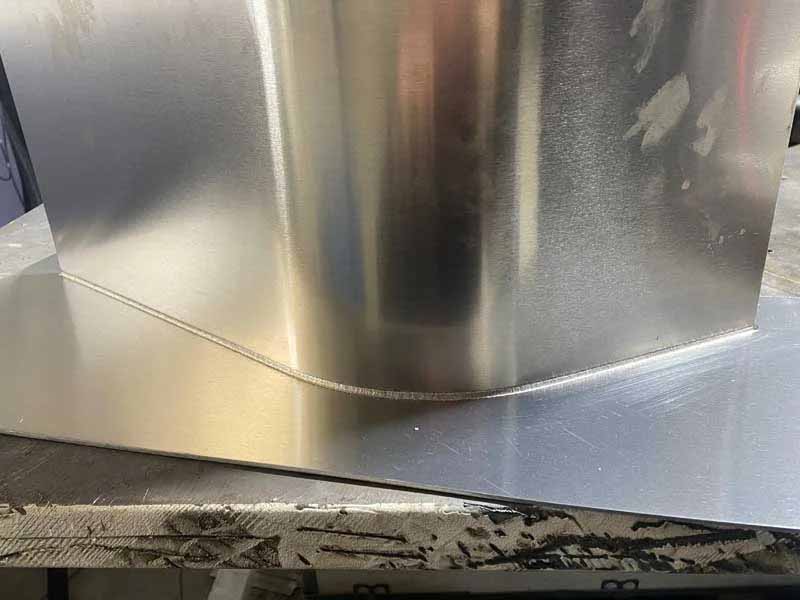
Disadvantages of Laser Welding Galvanized Steel Sheet
During the laser welding process, the coating on the surface of galvanized steel sheets may evaporate and release toxic gases, which can pose health risks to workers. Additionally, laser welding can lead to porosity and oxidation—issues that need careful attention when welding galvanized steel.
The zinc coating has a relatively low melting point, and as the laser power increases, the zinc layer melts first. This can lead to heat accumulation, resulting in the formation of porosity and inclusions during welding. Moreover, the zinc coating absorbs some of the laser energy, making it more challenging to achieve a well-formed weld seam. Therefore, when laser welding galvanized steel sheets, it is crucial to adjust equipment parameters and optimize welding processes based on the thickness of the sheet and the properties of the zinc coating to achieve the desired weld quality.
Furthermore, enhanced ventilation and protective measures are necessary to prevent the harmful effects of toxic gases released during evaporation. To address issues like zinc layer spattering, isolation measures can be employed, such as adjusting offset angle of laser beams.
Welding Wire for Galvanized Steel Laser Welding
Stainless Steel Welding Wire: Known for its excellent corrosion resistance and good formability, it is suitable for welding stainless steel and other materials. When welding galvanized steel sheets, stainless steel welding wire helps prevent defects such as porosity, thereby improving welding quality.
Copper-Aluminum Welding Wire: This copper alloy wire containing 6-10% aluminum is renowned for its excellent workability, electrical conductivity, and thermal conductivity. It effectively prevents oxidation during the welding process and reduces the risk of porosity.
Tin-Coated Welding Wire: Tin-coated welding wire involves coating low-melting-point metals like copper with a layer of tin to enhance corrosion resistance and welding performance. It reduces the temperature and time required for welding, optimizes intermetallic reactions, and improves the overall welding outcome.
The choice of wire feeding and the type of wire material should be determined based on the specific application scenario, material properties, and welding requirements.
Galvanized steel is known for its corrosion-resistant properties, making it commonly used in manufacturing electrical appliances, machinery, construction materials, and structural components. In automotive manufacturing, laser welding technology is used for welding galvanized steel body parts, achieving high-efficiency and high-quality welding results.
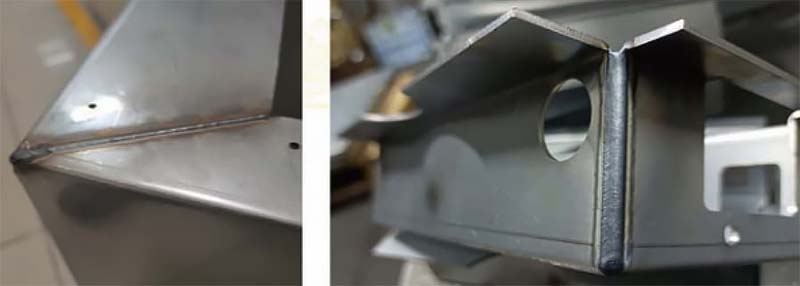
Parameter Settings for Galvanized Steel Laser Welder
Galvanized steel sheets are commonly used as construction materials and industrial raw materials, and their welding quality directly affects product performance and lifespan. Below are some key parameter settings for laser welding galvanized steel sheets. It is recommended to conduct multiple welding tests with samples and gradually adjust the parameters while inspecting the weld’s appearance and testing mechanical properties until the desired welding outcome is achieved. Additionally, we offer free sample testing services, and our engineers are available for consultation at any time.
Laser Power
Laser power is one of the key factors affecting welding quality. For galvanized steel sheets, a medium power setting is generally recommended to ensure proper molten pool formation while avoiding excessive evaporation of the zinc layer that can cause porosity. Recommended power range: 1,000W to 3,000W (adjust according to sheet thickness).
Welding Speed
Welding speed directly affects the heat input and weld formation. If the speed is too fast, the weld may become narrow; if it is too slow, hot cracking may occur. For welding 1.5mm thick galvanized sheets, the maximum welding speed can reach 30 mm/s. (Adjust according to sheet thickness; thicker sheets require slower welding speeds).
Focus Adjustment
Focus adjustment directly impacts the weld’s depth and width. The proper focus ensures the weld depth is moderate, avoiding incomplete penetration or excessive depth that could damage the material. Recommended focus adjustment: between -2mm and +2mm, depending on sheet thickness.
Shielding Gas
The choice of auxiliary gas significantly impacts the oxidation level during welding and the weld’s appearance. Argon or a mixed gas (such as argon with a small amount of carbon dioxide) is commonly used as a shielding gas. Recommended gas flow rate: 10 L/min to 20 L/min.
Laser Mode
The choice of laser mode affects the welding results. For galvanized steel sheets, continuous wave (CW) mode is recommended over pulsed mode to ensure process stability and weld quality.

New Galvanized Steel Laser Welding Machine
The latest 3-in-1 laser welding cleaning and cutting machine is a multifunctional laser system equipped with a handheld laser gun. It is capable of cutting and welding metals while also removing rust, paint, resin, coatings, grease, and stains. This device is ideal for welding stainless steel sheets, iron plates, aluminum plates, and galvanized sheets. With an integrated design and compact size, it is suitable for various work environments.
Laser welding significantly reduces the heat-affected zone (HAZ), allowing the original properties of the material to be better preserved, resulting in higher quality welds. Compared to traditional handheld welding techniques like TIG or MIG, this method improves operational efficiency by up to four times.
The laser welding equipment also features an auxiliary cutting function, capable of processing a variety of materials, including galvanized steel sheets, carbon steel, aluminum alloys, and stainless steel, with a maximum cutting thickness of up to 2 mm.
Laser rust removal technology can precisely eliminate rust layers on the material surface with minimal damage to the base material, ensuring the original integrity of the material surface. As a multi-function handheld laser welder, it also handles pre-welding and pre-cutting preparation work, significantly enhancing the quality and efficiency of subsequent processing.

Features of Galvanized Steel Laser Welder
Fast Welding: Provides a quick, clean welding process with minimal discoloration after welding.
Ease of Operation: The main control screen allows simultaneous adjustment of laser and wire feed parameters. Compared to traditional welding equipment, laser welding machines are simpler to operate and require less experience from welders.
Continuous Wave Laser: Utilizes continuous wave (CW) laser technology for improved welding results, including faster speeds, reduced deformation, greater depth, and higher smoothness.
Automation Features: Includes an automatic wire feed system to increase welding efficiency and quality.
High Precision: Capable of handling very small and precise weld seams.
Control System: Equipped with an easy-to-use control system and an attractive user interface.
Lightweight Design: Portable and user-friendly, enhancing operator comfort.
Compact Design: The overall compact and lightweight design includes swivel wheels for easy mobility.
Commercial Applications: Supports welding of galvanized steel up to 5-6 mm thick. Basically meet most galvanized steel plate processing.
Safety Alarms: Equipped with a buzzer that provides low-pressure alarms, high and low-temperature alarms, and self-protection features.
This 3-in-1 handheld laser welder utilizes advanced laser technology to achieve precise and efficient welding of galvanized steel sheets, ensuring high stability and excellent weld quality throughout the process. It addresses many of the shortcomings of traditional galvanized steel welding methods.
The Bottom Line
Laser welding offers a powerful solution for joining galvanized steel, delivering high precision and efficiency while addressing common challenges like zinc evaporation. DPLASER specialized galvanized steel laser welder is designed to meet the demands of working with galvanized steel plate and pipe, providing you with reliable and effective tools for your industrial needs. Explore our range to find the perfect solution for your metalworking and enhance production capabilities.
